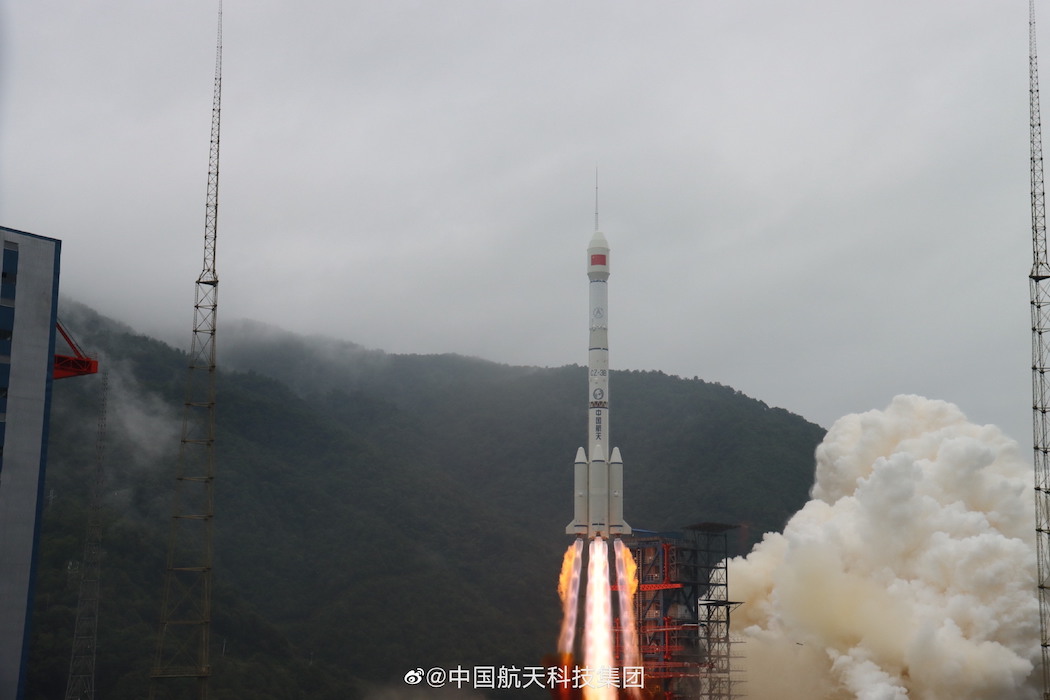Space News & Blog Articles
China says it has launched a space debris mitigation tech demo satellite
 A Long March 3B rocket lifts off with China’s Shijian 21 satellite. Credit: CASC
A Long March 3B rocket lifts off with China’s Shijian 21 satellite. Credit: CASC
China launched the classified Shijian 21 satellite Saturday on what government officials described as an experimental “space debris mitigation” mission.
The Shijian 21 satellite lifted off aboard a Long March 3B rocket at 9:27 p.m. EDT Saturday (0127 GMT Sunday) from the Xichang launch base, a military facility nestled amid mountains in Sichuan province of southwestern China.
The launch occurred at 9:27 a.m. Beijing time Sunday, marking the 39th orbital launch attempt from China this year, tying an annual record in Chinese launch activity set in 2018 and 2020.
The Long March 3B rocket flew southwest from the Xichang launch base, dropping its four liquid-fueled boosters and first stage over Chinese territory about two-and-a-half minutes into the mission. A second stage engine and a reignitable cryogenic third stage finished the rocket’s work before deploying the Shijian 21 satellite into orbit.
U.S. military tracking data indicated the launcher placed the Shijian 21 spacecraft into an elliptical geostationary transfer orbit ranging as high as 22,253 miles (35,813 kilometers) above Earth, with an inclination of about 28.5 degrees to the equator.
The orbit suggests Shijian 21 will use its own propulsion to circularize its orbit more than 22,000 miles over the equator. At that altitude, in a geostationary orbit, the spacecraft will move around Earth once every 24 hours, traveling at the same rate of the planet’s rotation.
In a statement, the China Aerospace and Science Technology Corp. confirmed the launch was a success. CASC said the Shijian 21 satellite was built by the Shanghai Academy of Spaceflight Technology, part of the government-owned space industry.
CASC did not disclose the mission of Shijian 21, but the state-run Xinhua news agency reported it will be “mainly used to test and verify space debris mitigation technologies.”
The launch of Shijian 21 is likely to draw attention from the U.S. government and other international space officials.
A space debris mitigation demonstration mission would employ the same capabilities of a military satellite that could approach, or even attempt to capture or disable, another spacecraft in orbit.
Geostationary orbit is a popular operating location for military and commercial communications satellites. Some military early warning satellites and navigation spacecraft also fly in geostationary orbit.
The U.S. military says China has already launched at least one satellite capable of approaching and capture other objects in geostationary orbit. The Shijian 17 satellite, launched in 2016, has a robotic arm that could be used in future systems to grapple other spacecraft, wrote Gen. James Dickinson, commander of U.S. Space Command, in testimony to a Senate committee earlier this year.
China says its Shijian-class satellites are designed for experiments and technology demonstrations. Shijian means “practice” in Chinese.
This email address is being protected from spambots. You need JavaScript enabled to view it. the author.
Follow Stephen Clark on Twitter: @StephenClark1.
When you subscribe to the SpaceZE News Feed, we will send you an e-mail when there are new updates on the site so you wouldn't miss them.

